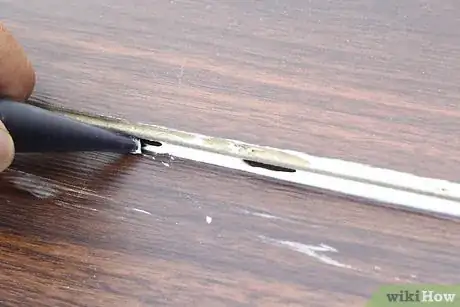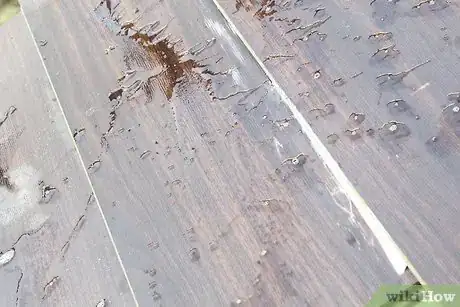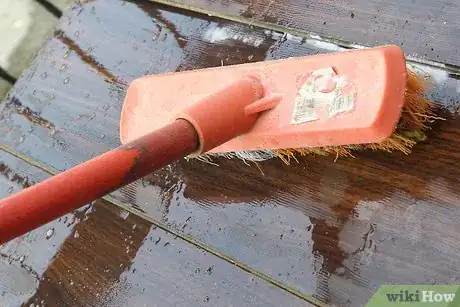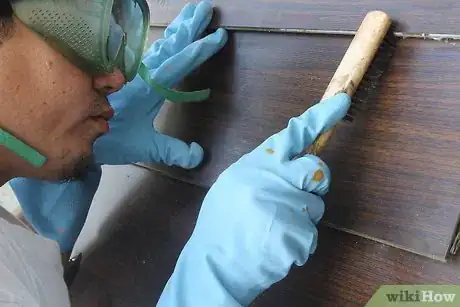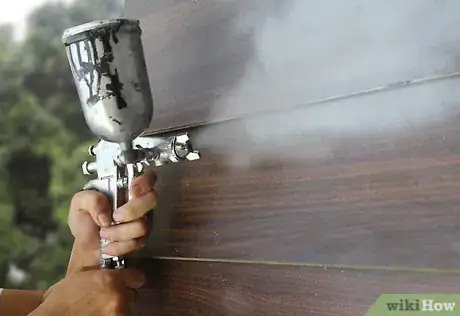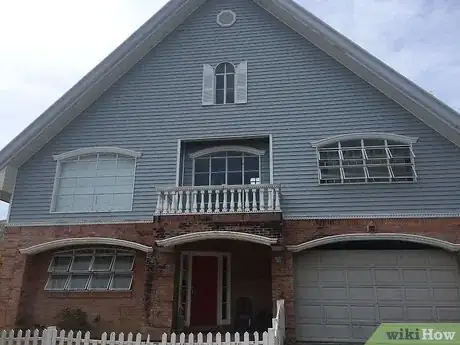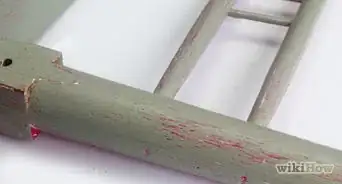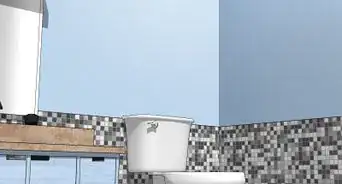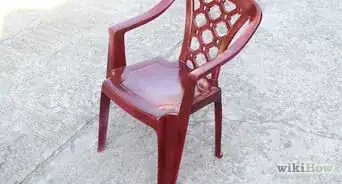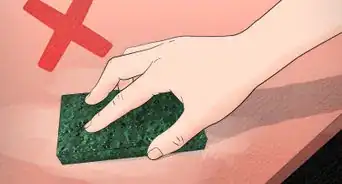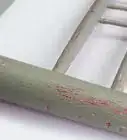X
wikiHow is a “wiki,” similar to Wikipedia, which means that many of our articles are co-written by multiple authors. To create this article, 11 people, some anonymous, worked to edit and improve it over time.
This article has been viewed 100,715 times.
Learn more...
Hardiplank and other brands of cement siding are among the most durable of all siding materials. Typically made of a high-density combination of cellulose fiber, cement and sand, fiber cement siding is tough, termite-resistant, water-resistant, and non-combustible. It’s also a great candidate for exterior painting, whether to correct a failing paint job or to simply change the color of the siding.
Steps
-
1Caulk and seal all cracks in the siding, as well as any open seams, joints, or gaps, with a quality acrylic or siliconized acrylic caulk. Unlike similar-sounding silicone caulks, siliconized acrylic caulks can be painted, so they enhance the finished appearance of the paint job. Note: Do not seal the side and bottom edges of the siding unless the manufacturer recommends it.[1]
-
2Treat any mildew that is present with a solution of one part bleach to three parts water. Apply the solution to the affected areas, leave it on for 20 minutes, then rinse it off thoroughly (wear eye and skin protection). If some areas of stubborn mildew remain, go through the same procedure and scrub off the mildew with a long-handled brush.Advertisement
-
3Remove dirt and dust from the exterior by power-washing the entire surface of the siding with plain water, or by cleaning it with a detergent solution and long-handled brush. Then rinse the surface thoroughly.
-
4Remove flaking. If any old paint still remains that is flaking or showing other signs of poor adhesion, remove it by careful wire-brushing, working in the direction of the simulated wood-grain, if there is any. When doing this work, wear a dust mask, as well as eye and skin protection.
-
5Apply some type of primer. To help the new paint adhere to the fiber cement siding and to get the most uniform-looking finish on your paint job, the best practice is to apply one coat of a quality exterior latex stain-blocking or masonry primer to all of the siding.
-
6Complete the paint job by applying a top quality 100% acrylic latex exterior paint that is recommended for use on masonry surfaces, or one that is specifically made for use on fiber cement siding. Top quality acrylic latex paints have superior adhesion, so they will maintain a tight grip on the siding to help prevent early paint failure. These paints also contain special additives to fight mildew formation. A second coat of paint will extend the life of your paint job, but is not essential.[2]
-
7Finished.
Advertisement
Community Q&A
-
QuestionDo I have to backroll hard siding? It doesn't take the paint level off easily, and the roller leaves flashing marks. Why is this, and what can I do about it?
 Community AnswerDon't paint in direct sun and add a paint additive like Paint Extender, which will slow down the drying time and give the paint time to level out. Later in the day, the surface of the siding can get up to 150 degrees in direct sun light, so paint the shady side first thing in the morning. Then, move with the sun, and stay in the shade if possible.
Community AnswerDon't paint in direct sun and add a paint additive like Paint Extender, which will slow down the drying time and give the paint time to level out. Later in the day, the surface of the siding can get up to 150 degrees in direct sun light, so paint the shady side first thing in the morning. Then, move with the sun, and stay in the shade if possible. -
QuestionDoes Hardiboard have to be painted?
 Community AnswerNo, it doesn't have to be painted.
Community AnswerNo, it doesn't have to be painted. -
QuestionDo I need to paint both sides of the hardy plank on the exterior?
 Community AnswerNo, you don't.
Community AnswerNo, you don't.
Advertisement
References
About This Article
Advertisement
